From the anguish of mental health, to the power of connection, to a mind-bending deconstruction of the Borg, “Hide and Seek” packs a wallop or two or three as the powerful, impactful, game-changing penultimate episode of Star Trek: Picard’s second season.
In many ways, this episode could have served as a satisfying season finale — albeit with more than a few threads left to untangle — so the fact we still get one more episode to deal with things like Q, Renée Picard, time travel and more, just further imprints exactly how successful this unique 10-chapter season of Star Trek has been.
(Of course, let’s be clear: if you already have an issue with the Picard narrative choices –basically a full season of Star Trek taking place on modern day Earth with nary a spaceship in sight — this episode will do nothing to change your mind. But who knows, maybe the finale will!)
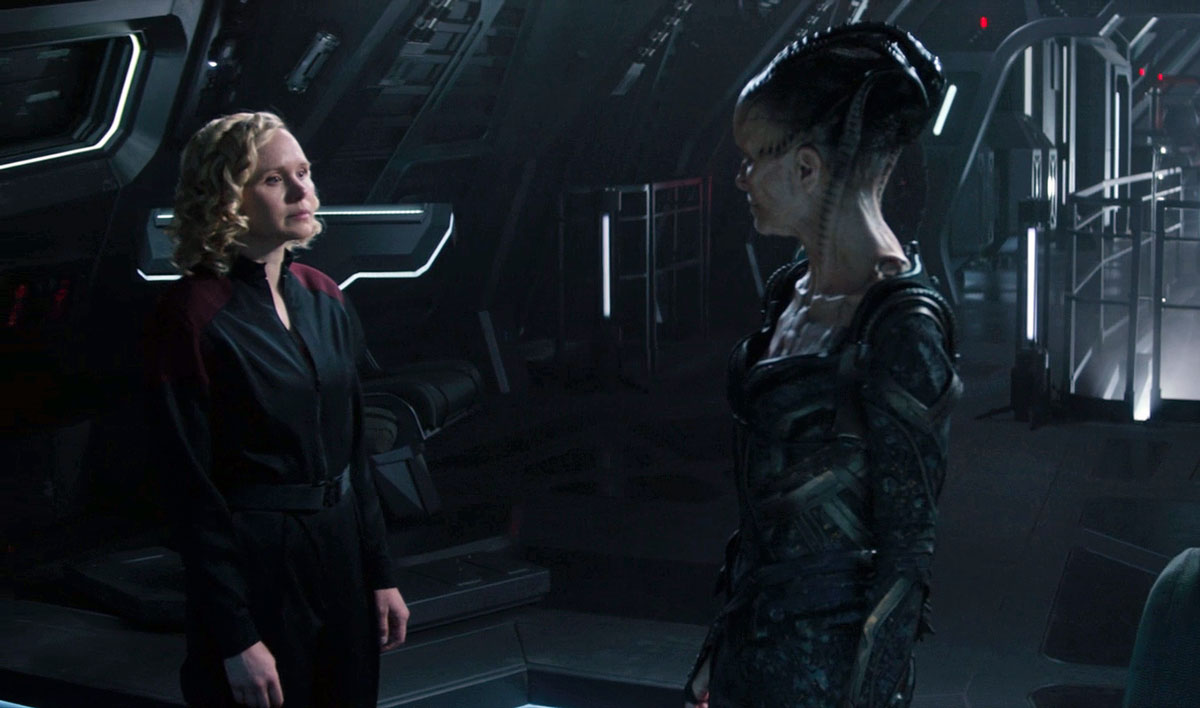
The structure of this episode is a simple one. Agnes Jurati (Alison Pill) is still exerting her influence from inside the emerging new Borg Queen, who is trying to seize control of La Sirena — while simultaneously utilizing Adam Soong’s (Brent Spiner) new drone army to hunt down the crew.
That heroic crew quickly splits up into three sets of pairs: Picard (Patrick Stewart) and Tallinn (Orla Brady) in the tunnels underneath Chateau Picard, Seven (Jeri Ryan) and Raffi (Michelle Hurd) working their way through a number of fire fights to get all the way back to the ship, and Rios (Santiago Cabrera) and Ramirez (Sol Rodriguez) being beamed back to Tallinn’s apartment to protect her and her son.
Through those many machinations of “Hide and Seek,” we see two heavy themes of the season collide in the episode, where the basic tenet that the galaxy is filled with lives that need saving is being showcased. Or put in another way, the world is filled with people that need our help. People that have been disenfranchised by the Borg and ICE (yep, you read that right), or who have suffered without help or sympathy from debilitating mental health issues.
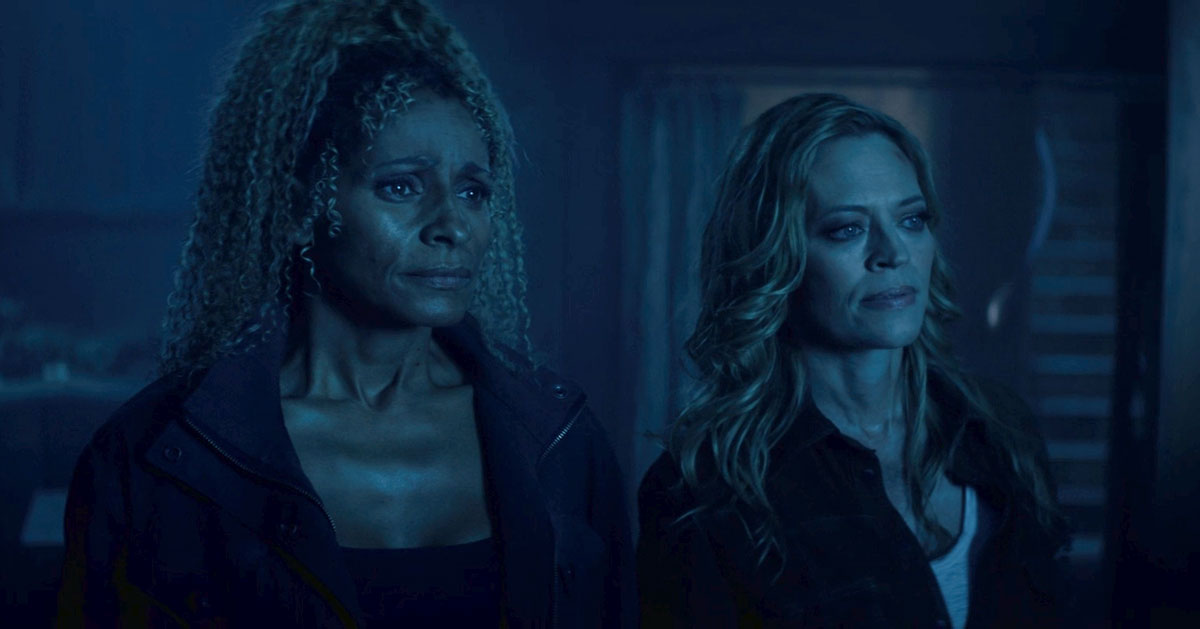
The deconstruction of the Borg that takes place in “Hide and Seek,” is nothing short of brilliant. There has been a lot of talk through the years about the Borg being overused and being a Trek antagonist with nothing left to mine, but here showrunner Terry Matalas has turned the Borg into something vital in our 21st century life. An era currently being defined by democracies sliding closer and closer toward fascist futures highlighted by poverty, racism, and a gigantic wealth gap.
Through the prodding of Jurati, who is slowly being assimilated as the new Borg Queen, we see the Borg for the first time being presented a new way. Instead of being the same old Borg (you can read Borg as “corporation” or “government”) hellbent on acquiring power and status, they can alternatively turn their focus toward embracing the strength in people they’ve previously discarded as weak.
In Jurati’s vision, the Borg could be a real collective for the first time: a collective based not on assimilation, but salvation. Imagine the resources of a delusory organization like ICE being used to help people, so they could contribute to a community for the benefit of everyone. Sounds like something pulled directly from the Federation charter.
If the producers of this show aren’t making a direct correlation that ICE should be abolished and instead turned into a governmental arm designated to integrate people into new communities to help make something distinctive and beautiful and better, then allow me to do it right now. Abolish ICE. Put the resources into communities to help them.

The “top-shelf, over-reaching, Icarus-worthy arrogance” of today’s modern leaders cannot imagine the way immigrants in countries around the world fight harder for what they choose. They can’t see a world in which you lose no battles because you made no enemies. And they certainly fail to understand how attachments grow and deepen to strengthen a society when people aren’t being discarded and replaced.
It’s here, with Seven mortally wounded by a stab from the resistant Borg Queen, that Jurati’s vision uses one of the great analogies in Star Trek history, highlighting the incredible journey of Jeri Ryan’s beloved character, Seven of Nine.
In a goosebump-inducing moment, she argues that Seven, who was once loved by the Queen herself, is the perfect example of the best of what we could be. Someone who used her Borg half to serve the best of humanity. “Let’s build a universe of Seven’s,” Jurati says to close out her incredible deconstruction of what it means to help those in need so they can help you in return.
Although not quite a culmination — as we’ll see how things play out in the finale — this development is incredibly satisfying as the new Borg Queen is seen leaving the crew behind on Earth and whisking away as part of a deal to save Seven and consider Jurati’s ideas to evolve into “something new, something better.” (I guess we really are going to see her again on the bridge of the Stargazer!)

Beyond those developments with the Borg, the episode also brings Picard’s painful childhood memories to the forefront, where he acknowledges for the first time the memory of his mother’s tragic suicide. The chilling reveal of his mother’s death could well have come with a trigger warning for the way it effectively captures the heartbreak and the pain of the death of a loved one. It’s not easy to watch, and maybe that’s the point: discussions of mental health are not always easy to have, and too often are pushed aside for a little “pick me up” speech or worse, ignored altogether.
As they’ve done all season –- and I really don’t understand those folks who are saying they don’t think the stories being told have been cohesive -– the episode’s key narrative themes are woven together by unifying threads. Elements like the fear of loss, and also longing for connection, longevity, and discovery. Whether it be Seven and Raffi, or Raffi and Elnor, or Rios and Ramirez, or Soong and Kore, or Agnes and the Borg Queen, you simply need to “do the math, you always lose, in every universe” if you remain stuck in the past and don’t work through your relationships and trauma.
As for Picard, his childhood trauma is a shocking reveal that deepens our understanding of a character we’ve lived with for 35 years. In telling this part of the story, we see for the first time Picard with both his parents in a family setting (minus older brother Robert, who is away from home “at school” as established in the season premiere). The pseudo-idyllic flashbacks to their home life see Maurice (James Callis) addressing Yvette’s condition and her “progress,” but it’s obvious she is not doing well.

The interaction leads to a game of hide-and-seek that is a catalyst for the trauma that affects Jean-Luc. After Yvette (Madeline Wise) suffers a breakdown (much of which was previewed two episodes prior in “Monsters”), Maurice locks her in her room for her own protection so she won’t harm herself. Although not clearly stated, I can only assume she was only problematically detained for a short period as Maurice moved to make arrangements to get her the immediate medical attention she needed.
Of course, with mental health that is one of the challenges – getting people help when they can be extremely resistant to the idea. It’s not a simple equation and there certainly aren’t easy answers. Sadly, Yvette’s pleas for the young Jean-Luc (Dillon Von Halle) to free her from the room were heeded by the young boy which leads to him finding her a short time later in their beloved solarium, having hung herself.
For Jean-Luc the horrific memory of his mother’s tragic death has been buried deep inside, to the point he hasn’t dealt with it in any meaningful way. It’s a moment that has helped shape the hard exterior of a man who has never truly allowed himself to fall in love or to give himself over full-heartedly to another person. It was also the act of a child imperceptibly fulfilling his mother’s final wish.
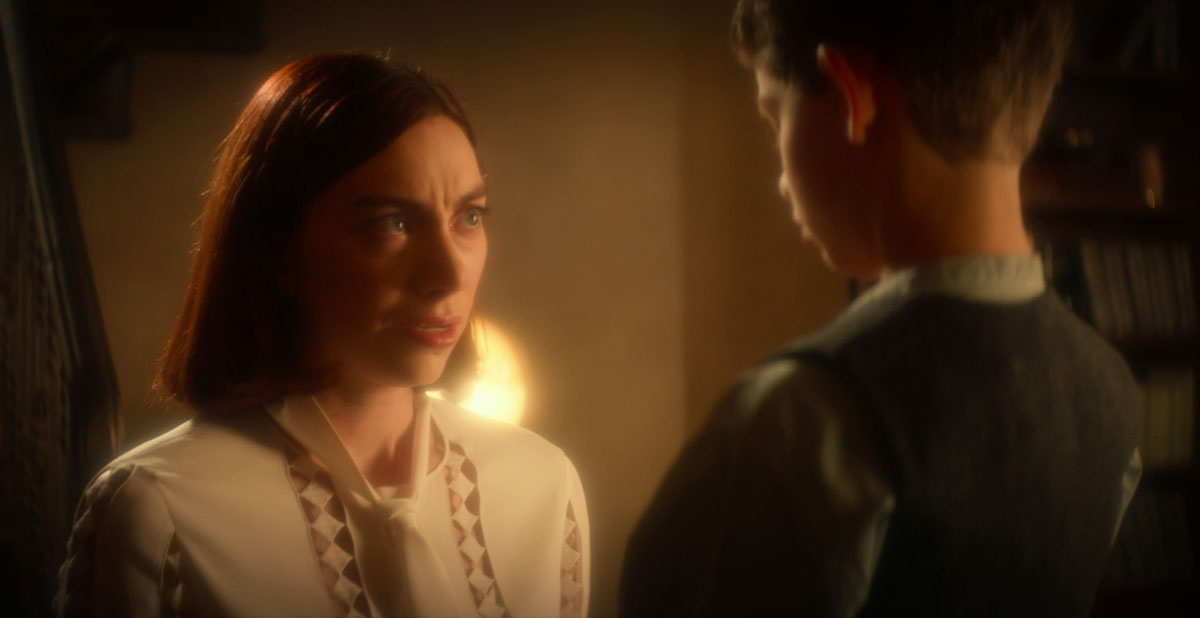
Throughout the season we’ve seen Yvette and Jean-Luc both talking about her love for the stars and her desire to “look up” toward them in times of adversity. In her final inspirational moment with her son, she tells him that the exquisite light in the night sky is actually just the echo of a star that has long since faded — like herself. And she implores him to promise her that “when you remember me, you will ignore the coldness of the dying star and remember instead her light and the infinite love she so very much had for you.”
And that is exactly what Jean-Luc did his entire life. The writers even poignantly address Picard’s vision of his aged mother in “Where No One Has Gone Before,” acknowledging it as an admission that he had buried his pain so deep that he would sometimes fantasize about interactions with his mother having lived into her golden years. It’s a beautiful touch from a writer’s room that is once again not only paying attention, but also paying tribute to 55 years of Star Trek.
Elsewhere, two other important elements in the series were addressed in “Hide and Seek.” First, with Seven revealing for the first time that she had looked at joining Starfleet when she returned from the Delta Quadrant but was shot down because of her Borg past — an event that spurred her to go full Fenris Ranger. Another example of not embracing those in need to help make yourself stronger.
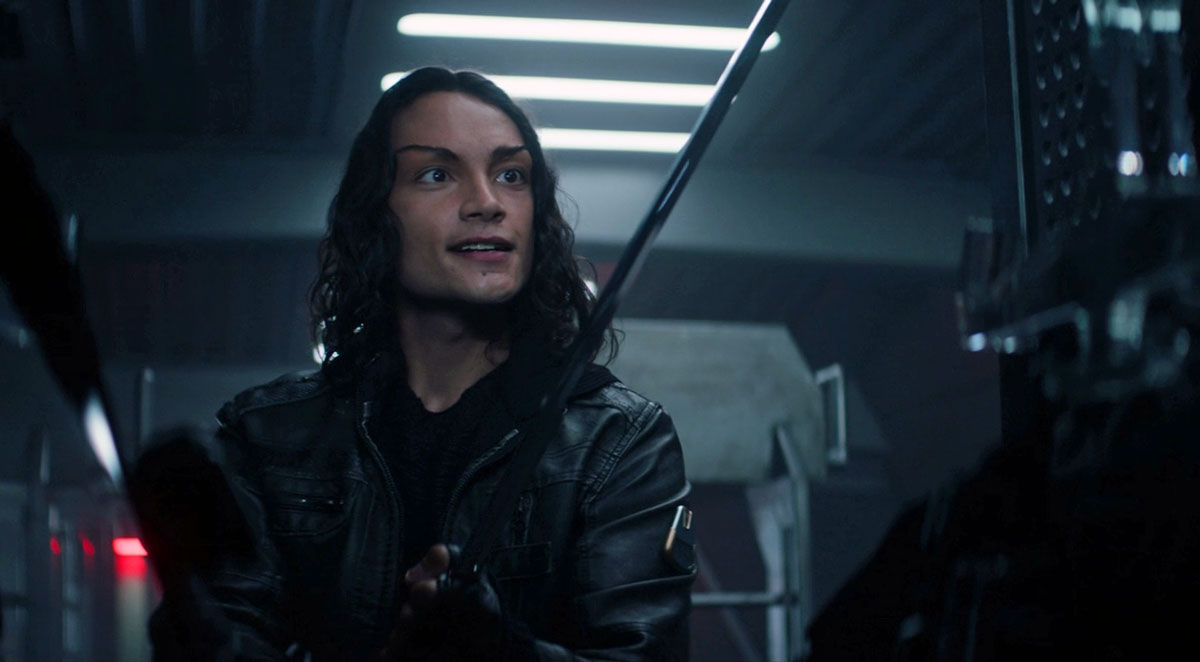
And sadly, we see the return of Elnor (Evan Evagora) as an Emergency Combat Hologram, who shares a quick moment with Raffi to absolve her of the guilt she has been feeling in guiding him to stay in Starfleet because of her own insecurities. (He’s only a hologram, but somehow he shares some memories and emotions of Elnor through the time of his death. That Confederation tech is good stuff!)
The inclusion of this scene, as well as the fact that La Sirena just warped away from Earth with Elnor’s body on board, would seem to indicate that maybe we aren’t going to get some kind of magical reset button that brings Elnor back to life. I certainly hope I’m wrong.
Finally, there are a number of showdowns between Picard and Soong that don’t amount to much but will surely be a part of the finale when we likely see more with the Europa Mission and Renée Picard, who was part of a cryptic, departing message from Queen Agnes, who says, “There must be two Renées. One who lives, and another who dies.”
Her meaning is still unknown… but this spaceship pilot isn’t the first Picard we’ve known with that first name.

OBSERVATION LOUNGE
- Despite his noted Luddite stance, Maurice Picard reads from a padd at home — likely due to the outdated nature of print media in the 24th century. (Old books are still around, but it’s probably difficult to read the day’s news on anything except a digital device.)
- Young Jean-Luc has a model ship of Doug Drexler’s NX-refit, finally bringing that post-Star Trek: Enterprise starship design into mainstream Star Trek canon.
- An Excelsior-class ship — complete with lit warp nacelles — is on display in the Picard family living room.
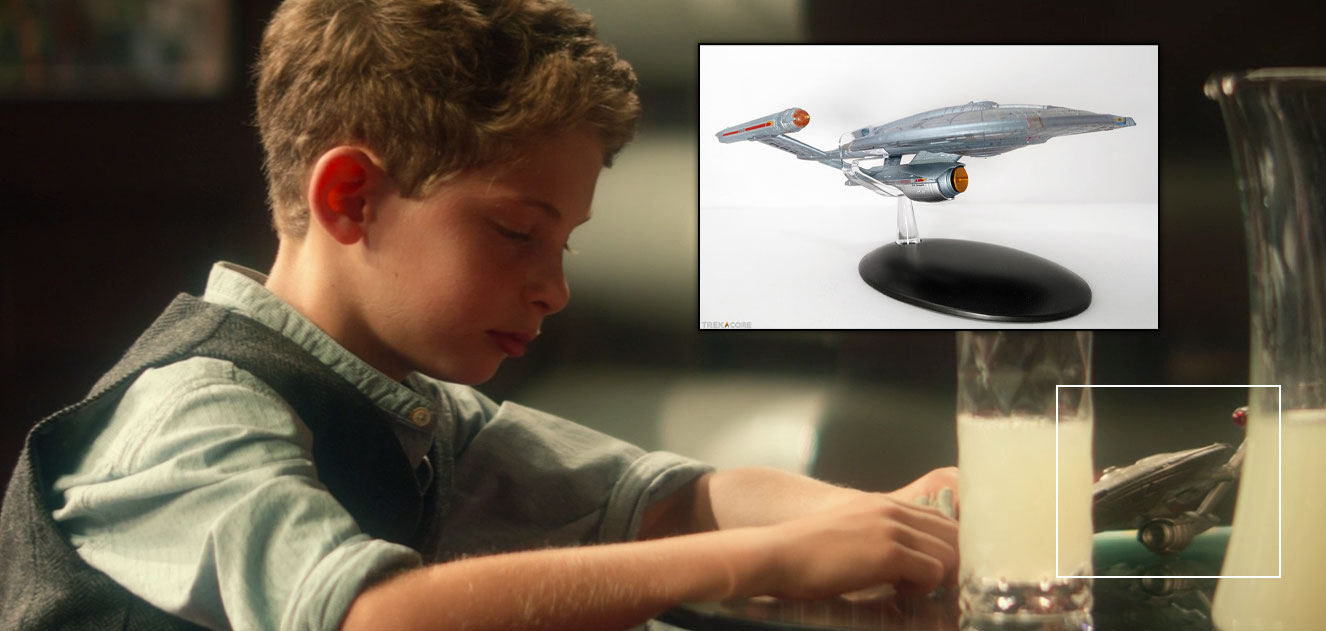
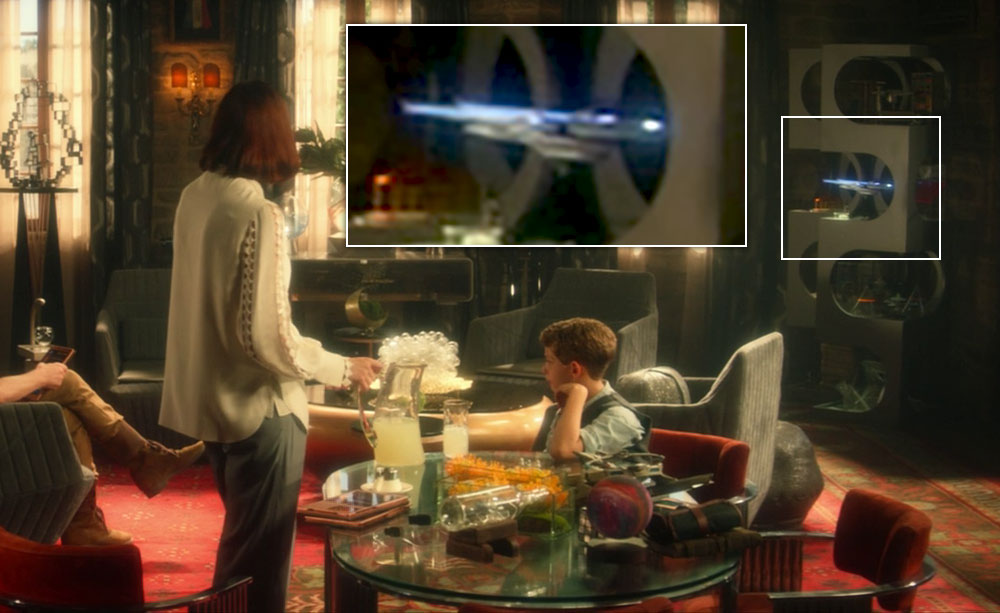
- Like the “real” La Sirena, the version of Rios’ ship from the Confederation timeline also has a built-in holographic projectors; this reality’s ship however can create illusory replicas of anyone who boards the ship.
- Like Data’s programming in Star Trek: First Contact, Agnes locks down La Sirena’s computers from Borg access using a fractal encryption lock.

- Hologram Elnor wears a mobile holo-emitter on his arm, similar in design to the one worn by The Doctor in Star Trek: Voyager.
- We learn this episode that after Voyager returned to the Alpha Quadrant, Seven of Nine attempted to join Starfleet — but was denied entry to service, despite Captain Janeway’s protests. (Icheb probably had no issue: while he was assimilated, the young man’s only exposure to “Borg life” was the few months he spent inside a maturation chamber.)
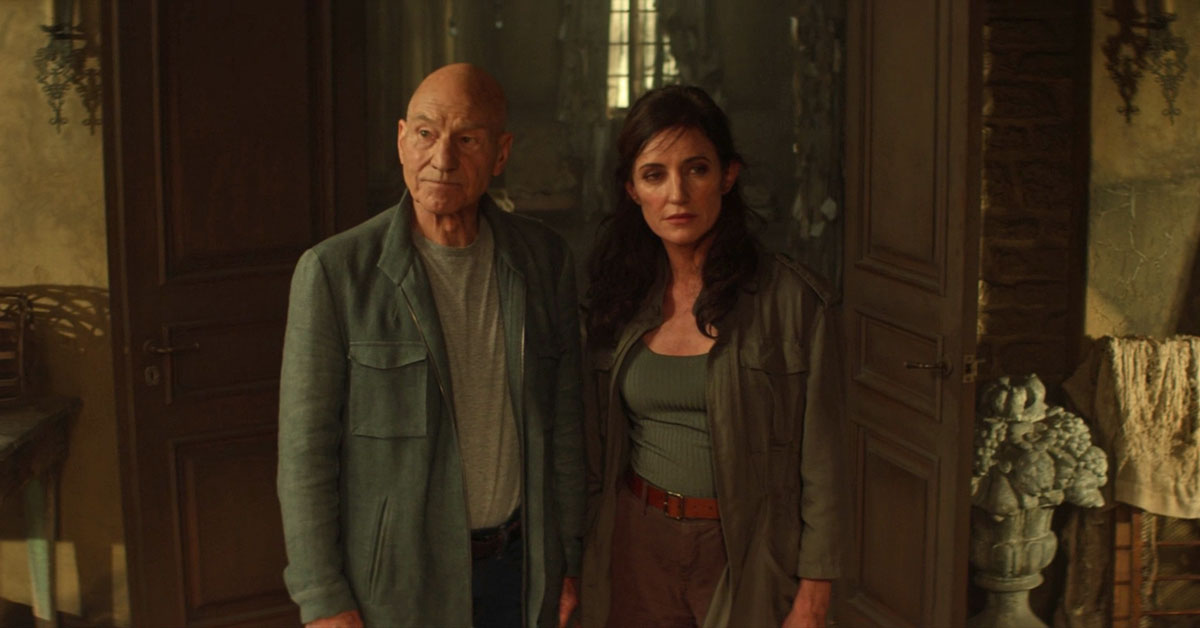
With one episode to go, this special season of Star Trek: Picard has positioned itself for a finale that will likely set-up the launch of an epic third season reunion of the entire cast of Star Trek: The Next Generation in 2023.
Jim Moorhouse is the creator of TrekRanks.com and the TrekRanks Podcast. He can be found living and breathing Trek every day on Twitter at @EnterpriseExtra.
![]() Star Trek: Picard concludes its second season with “Farewell” on May 5 on Paramount+ in the United States, and on CTV Sci Fi Channel and Crave in Canada. Outside of North America, the series is available on Amazon’s Prime Video service in most international locations.
Star Trek: Picard concludes its second season with “Farewell” on May 5 on Paramount+ in the United States, and on CTV Sci Fi Channel and Crave in Canada. Outside of North America, the series is available on Amazon’s Prime Video service in most international locations.
